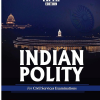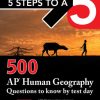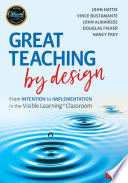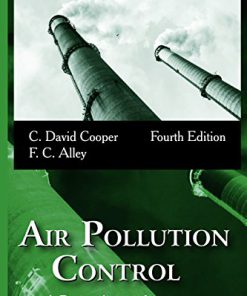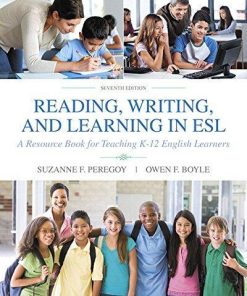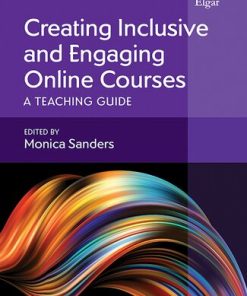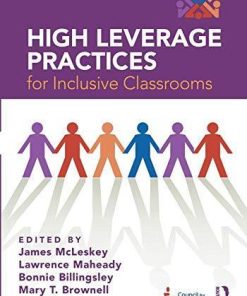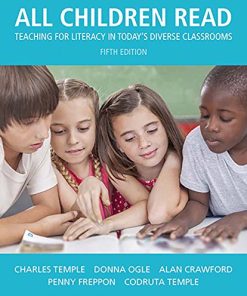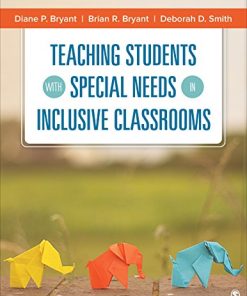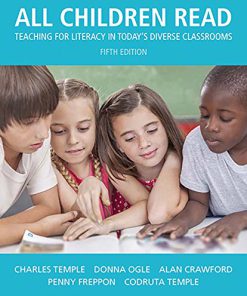Teaching in Today’s Inclusive Classrooms A Universal Design for Learning Approach 4th Edition by Richard Gargiulo, Debbie Metcalf 9798214354170
$50.00 Original price was: $50.00.$25.00Current price is: $25.00.
Teaching in Today’s Inclusive Classrooms: A Universal Design for Learning Approach 4th Edition by Richard M. Gargiulo, Debbie Metcalf – Ebook PDF Instant Download/DeliveryISBN: 9798214354170
Full download Teaching in Today’s Inclusive Classrooms: A Universal Design for Learning Approach 4th Edition after payment.
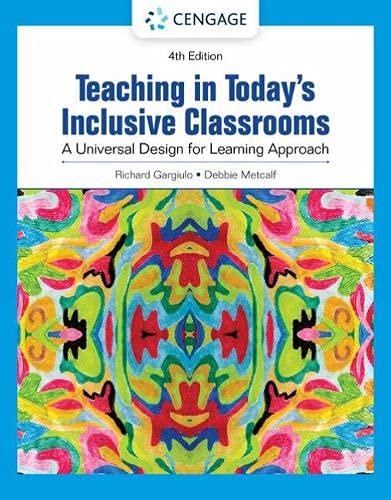
Product details:
ISBN-13 : 9798214354170
Author : Richard M. Gargiulo, Debbie Metcalf
Concise and accessible, Gargiulo/Metcalf’s TEACHING IN TODAY’S INCLUSIVE CLASSROOMS: A UNIVERSAL DESIGN FOR LEARNING APPROACH, 4th edition, equips you with a practical, flexible framework for effective instruction, classroom management, assessment and collaboration in today’s diverse classrooms. It is the first inclusion textbook with a consistent, integrated emphasis on UDL — a key educational philosophy focused on using strategies and tools to help ALL students by accommodating their differences. Aligned with InTASC and CEC standards, this hands-on text delivers foundational information about children with disabilities included in today’s classrooms as well as the most effective strategies for teaching them alongside their typically developing peers. Extensive coverage of Common Core State Standards is coupled with insightful case studies and sound research-based teaching and learning strategies.
Teaching in Today’s Inclusive Classrooms: A Universal Design for Learning Approach 4th Table of contents:
Part 1. Foundations for Educating all Learners
Chapter 1. Teaching in Today’s Inclusive Classrooms Your Journey Begins
Learners in Today’s Classrooms
Learners in Need of Special Services
By the Numbers: A Quick Look
Placement Options for Educating Students with Special Needs
Educational Placements
A Cascade of Service Delivery Options
Inclusionary Practices and Thinking
Introducing Universal Design for Learning
The Role of the Courts in Special Education
Key Judicial Decisions
Key Special Education Legislation
Educational Reform for Students and Teachers
No Child Left Behind Act of 2001
Common Core State Standards
Individuals with Disabilities Education Improvement Act of 2004
Every Student Succeeds Act
Civil Rights Legislation
Thematic Summary
Making Connections for Inclusive Teaching
Learning Activities
Looking at the Standards
Key Concepts and Terms
Chapter 2. Introducing Universal Design for Learning
The Concept of Universal Design
Background in Architecture
The Seven Principles of Universal Design
Universal Design Applications in Society
Implications for Today’s Classrooms
The Development of Universal Design for Learning
Brain-Based Research: Recognition, Strategic, and Affective Systems
Cognitive-Social Learning Theories
Multiple Intelligences and Learning Preferences
Implications for Teaching and Learning
Three Essential Qualities of UDL: Representation, Action and Expression, and Engagement
Multiple Means of Representation
Multiple Means of Action and Expression
Multiple Means of Engagement
UDL and Differentiated Instruction
The Benefits of Flexible Options
Thematic Summary
Making Connections for Inclusive Teaching
Learning Activities
Looking at the Standards
Key Concepts and Terms
Chapter 3. Policies, Practices, and Processes for Special Education and Inclusive Education
Identification and Assessment of Individual Differences
Referral and Assessment for a Special Education
Prereferral
Referral
Assessment
Instructional Programming and Appropriate Placement
The Individualized Education Program
Related Services
Section 504 Accommodation Plan
Who Is Protected by Section 504?
Providing a Free Appropriate Public Education
Section 504 Eligibility Determination
Accommodation Plans
Thematic Summary
Making Connections for Inclusive Teaching
Learning Activities
Looking at the Standards
Key Concepts and Terms
Chapter 4. Diversity in the Classroom: Learners with High Incidence Disabilities
Learners with Intellectual Disability
Defining Intellectual Disability
Classification of Learners with Intellectual Disability
How Many Learners Exhibit Intellectual Disability?
Etiology of Intellectual Disability
Selected Learning and Behavioral Characteristics of Learners with Intellectual Disability
Learners with Learning Disabilities
Defining Learning Disabilities
How Many Learners Exhibit Learning Disabilities?
Etiology of Learning Disabilities
Selected Learning and Behavioral Characteristics of Learners with Learning Disabilities
Learners with Speech and Language Impairments
Defining Speech and Language
Classifying Learners with Speech and Language Impairments: Speech Disorders
Language Disorders
How Many Learners Exhibit Speech and Language Impairments?
Etiology of Speech and Language Impairments
Selected Characteristics of Learners with Speech and Language Impairments
Learners with Emotional or Behavioral Disorders
Defining Emotional or Behavioral Disorders
Classifying Learners with Emotional or Behavioral Disorders
How Many Learners Exhibit Emotional or Behavioral Disorders?
Etiology of Emotional or Behavioral Disorders
Selected Learning and Behavioral Characteristics of Learners with Emotional or Behavioral Disorders
Learners with Autism Spectrum Disorders
Defining Autism Spectrum Disorders
How Many Learners Exhibit Autism Spectrum Disorders?
Etiology of Autism Spectrum Disorders
Selected Learning and Behavioral Characteristics of Learners with Autism Spectrum Disorders
Learners with Attention Deficit Hyperactivity Disorder
Defining Attention Deficit Hyperactivity Disorder
How Many Learners Exhibit Attention Deficit Hyperactivity Disorder?
Etiology of Attention Deficit Hyperactivity Disorder
Selected Learning and Behavioral Characteristics of Learners with Attention Deficit Hyperactivity Disorder
Summary of Selected Learning and Behavioral Characteristics
Thematic Summary
Making Connections for Inclusive Teaching
Learning Activities
Looking at the Standards
Key Concepts and Terms
Chapter 5. Diversity in the Classroom: Students with Low Incidence Disabilities
Learners with Hearing Impairments
Defining Hearing Impairments
Classification of Learners with Hearing Impairments
How Many Learners Exhibit Hearing Impairments?
Etiology of Hearing Impairments
Selected Learning and Behavioral Characteristics of Learners with Hearing Impairments
Learners with Visual Impairments
Defining Visual Impairments
Classification of Learners with Visual Impairments
How Many Learners Exhibit Visual Impairments?
Etiology of Visual Impairments
Selected Learning and Behavioral Characteristics of Learners with Visual Impairments
Learners with Deaf-Blindness
Defining Deaf–Blindness
How Many Learners Exhibit Deaf–Blindness?
Etiology of Deaf–Blindness
Selected Learning and Behavioral Characteristics of Learners with Deaf–Blindness
Learners with Physical Disabilities, Health Disabilities, or Traumatic Brain Injury
Defining Physical Disabilities, Health Disabilities, and Traumatic Brain Injury
Conditions Associated with Physical and Health Disabilities
Physical Disabilities
Orthopedic Impairments
Multiple Disabilities
Traumatic Brain Injury
Health Disabilities
Other Health Impairments
How Many Learners Exhibit Physical Disabilities, Health Disabilities, or Traumatic Brain Injury?
Etiology of Physical Disabilities, Health Disabilities, and Traumatic Brain Injury
Selected Learning and Behavioral Characteristics of Learners with Physical Disabilities, Health Disabilities, or Traumatic Brain Injury
Students with Traumatic Brain Injury
Summary of Selected Learning and Behavioral Characteristics
Thematic Summary
Making Connections for Inclusive Teaching
Learning Activities
Looking at the Standards
Key Concepts and Terms
Chapter 6. Learners with Gifts and Talents, Learners Who Are Culturally and Linguistically Diverse, and Other Learners at Risk
Learners with Gifts and Talents
Defining Giftedness
How Many Learners Exhibit Gifts and Talents?
Etiology of Giftedness
Selected Learning and Behavioral Characteristics of Learners with Gifts and Talents
Learners Who Are Culturally and Linguistically Diverse
Terminology of Cultural Differences
Bilingual Education: Concepts and Characteristics
Cultural and Linguistic Diversity and Special Education
Learners at Risk for Success in School
Defining at Risk
Family Poverty
Homelessness
Child Abuse and Neglect
Summary of Selected Learning and Behavioral Characteristics
Thematic Summary
Making Connections for Inclusive Teaching
Learning Activities
Looking at the Standards
Key Concepts and Terms
Part 2. Planning Instruction for All Learners
Chapter 7. Collaboration and Cooperative Teaching: Tools for Teaching All Learners
Collaboration
Collaboration Between General and Special Educators
Collaborating with Paraprofessionals
Who Is the Paraprofessional?
Collaborating with Parents/Families
Collaborative Consultation
Teaming Models
Multidisciplinary Teams
Interdisciplinary Teams
Transdisciplinary Teams
Cooperative Teaching
Cooperative Teaching Options
Research Support
Suggestions for Building Successful Cooperative Teaching Arrangements
Thematic Summary
Making Connections for Inclusive Teaching
Learning Activities
Looking at the Standards
Key Concepts and Terms
Chapter 8. Designing Learning That Works for All Students
Four Components of Universally Designed Curriculum
Goals
Materials and Resources
Methods
Assessment
The UDL Lesson Plan
Designing Physical Learning Environments
Physical Environment Considerations
ACCESS to the Physical Learning Environment
Designing Social Learning Environments
ACCESS to the Social Environment
Positive Behavioral Interventions and Supports and UDL
Using Adaptations to Support Universally Designed Learning Environments
Accommodations
Modifications
Collaboration in Planning Universally Designed Learning Environments
Collaborative Planning and Teaching
Collaborative Problem-Solving
Thematic Summary
Making Connections for Inclusive Teaching
Learning Activities
Looking at the Standards
Key Concepts and Terms
Chapter 9. Assessing and Evaluating Learner Progress
Types and Purposes of Classroom Assessment
Large-Scale Assessments
Alternate Assessments
Ongoing Assessment
Effective Classroom Assessment Approaches
Approaches to Initial Assessment That Increase Learner Engagement
Review of School Records
Formal and Informal Assessments
Inventories
Working Collaboratively
Interpreting Standardized Tests
Interpreting Behavior Rating Scales
Positive Behavior Interventions and Supports
Planning and Organizing Assessments
Planning for Ongoing Assessment
Formative Assessments
Summative Assessments
Informative Assessments
Organizational Systems for Assessments
Recording Assessments
Curriculum-Based Measurement
Data-Based Individualization
Rubrics
Applying Universal Design for Learning Principles
High-Tech and Low-Tech Materials
Computerized Assessments and Electronic Device Applications
Multiple Means of Representation in Assessment
Multiple Means of Engagement in Assessment
Thematic Summary
Making Connections for Inclusive Teaching
Learning Activities
Looking at the Standards
Key Concepts and Terms
Chapter 10. Selecting Instructional Strategies for Teaching All Learners
Considering Stages of Learning in Strategy Selection
Entry Level/Acquisition Stages
Proficiency
Maintenance
Generalization
Application
Using Curricular Design Principles in Strategy Selection
Begin with Big Ideas
Activate Prior Knowledge
Integrate Learning Goals
Use Conspicuous Strategies
Apply Mediated Scaffolding
Provide Purposeful and Cumulative Review
Considering Specific Learning Domains in General Strategy Selection
Cognitive/Generalization
Giftedness
Language/Speech
Memory
Study Skills, Organization, and Test-Taking
Attention Disorders/Hyperactivity/Lmpulsivity
Social/Emotional/Motivational Challenges
Physical/Motor/Sensory Challenges
Using Classroom Web Sites and Other Web Tools
Thematic Summary
Making Connections for Inclusive Teaching
Learning Activities
Looking at the Standards
Key Concepts and Terms
Chapter 11. Selecting Behavioral Supports for All Learners
Establish Learning Goals: Big Ideas for Behavioral Support
Teacher Expectations and Challenging Behaviors
Students with Exceptionalities and Other Diverse Learners
Multiple Meanings of Challenging Behavior
Using Positive Behavior Interventions and Support
Assessment of Behavior
Targeting the Behavior
Tracking the Behavior
Recording Behavior
Analyzing Behavior
Methods, Materials, and Resources that Promote Positive Behavior for All Learners
Understanding Terminology
Increasing Appropriate Behavior
Decreasing Inappropriate Behavior
Teaching New Behavior
Maintenance and Generalization
Peers and School Personnel
Collaborating with Parents
Culturally Diverse Families
Summary—Putting It All Together
Thematic Summary
Making Connections for Inclusive Teaching
Learning Activities
Looking at the Standards
Key Concepts and Terms
Part 3. Implementing Effective Instructional Practices for All Learners
Chapter 12. Assistive Technologies and Innovative Learning Tools
Technology in the 21st Century Classroom
History of Technology for People with Disabilities
Definition of Assistive Technology
Examples of Assistive Technology
Assistive Technology: Key to Accessing the General Education Curriculum
Accessible Educational Materials
Learner Needs and Preferences
Differentiated Instruction, Learning Menus, and Assistive Technology
Function over Disability
Obtaining Assistive Technology for the Classroom
Whose Responsibility Is It?
The AT Evaluation
Selecting Assistive Technology: The SETT Framework
Student
Environment
Task
Tools
Other Assistive Technology Planning Tools
Active Learning Through Innovative Technology
Social Software Tools
Visual and Media Literacy Tools
Opportunities Through Technology
Thematic Summary
Making Connections for Inclusive Teaching
Learning Activities
Looking at the Standards
Key Concepts and Terms
Chapter 13. Creating Literacy-Rich Environments for all Learners
Goals: Literacy Instruction Big Ideas
Phonemic Awareness, Phonics, and Word Recognition
Fluency with Text
Vocabulary
Comprehension
Writing/Spelling/Handwriting
Literacy Assessment
Formal Assessments
Reading and Writing Questionnaires
Informal Assessments
Ongoing Assessments
Methods, Materials, and Resources That Promote Literacy for All Learners
Fostering Phonemic Awareness, Phonics, and Word Recognition
Increasing Fluency with Text
Developing Vocabulary
Building Comprehension
Assisting with Writing/Spelling/Handwriting
UDL Applications for Reading in the Content Areas
Modify the Reading Requirement
Modify the Reading Level of the Text
Adapt the Format of the Text/Print Material
Adapt the Presentation of the Text
Possible Barriers and Solutions to Literacy Achievement
Vision
Hearing
Social/Emotional
Attention Deficit Hyperactivity Disorder
Motivation
UDL Lesson Planning with Differentiated Instruction for Literacy
Fostering Literacy Collaboration
Thematic Summary
Making Connections for Inclusive Teaching
Learning Activities
Looking at the Standards
Key Concepts and Terms
Chapter 14. Developing an Understanding of Mathematics in All Learners
Establish Learning Goals: Big Ideas in Mathematics Instruction
Problem-Solving
Mathematic Communication
Numbers and Operations
Algebra
Geometry and Spatial Sense
Measurement
Data Analysis and Probability
Assessment of Mathematics
Formal Assessment
Informal Assessment
Methods, Materials, and Resources That Promote Mathematics for All Learners
Problem-Solving
Communication of Mathematic Ideas
Numbers and Operations
Algebra
Geometry and Spatial Sense
Measurement
Data Analysis and Probability
Universal Design for Learning Lesson Planning with Differentiated Instruction for Mathematics
Fostering Collaboration in Mathematics Instruction
Thematic Summary
Making Connections for Inclusive Teaching
Learning Activities
Looking at the Standards
Key Concepts and Terms
Chapter 15. Teaching Critical Content In Science and Social Studies To All Learners
Challenges for Diverse Learners in Science and Social Studies
Learning Goals
Big Ideas in Science
Big Ideas in Social Studies
Interdisciplinary Unit Planning
Differentiating for Complexity
Science and Social Studies Content Area Assessment
Using Rubrics
Applying UDL to Science and Social Studies Assessments
Methods, Tools, Materials, and Resources for Science and Social Studies Instruction
Multiple Means of Representation
Working with Vocabulary and Readability
Multiple Means of Action and Expression
Multiple Means of Engagement
Academic, Social, and Physical Adaptations
The Academic and Social Environment
The Physical Environment
UDL Lesson Planning with Differentiated Instruction for the Content Areas
Collaboration in Science and Social Studies Instruction
Co-Teaching
Building Community Support
Thematic Summary
Making Connections for Inclusive Teaching
Learning Activities
Looking at the Standards
Key Concepts and Terms
People also search for Teaching in Today’s Inclusive Classrooms: A Universal Design for Learning Approach 4th:
inclusive classroom examples
teaching in today’s inclusive classrooms ebook
teaching in inclusive classrooms bryant
teaching in today’s inclusive classrooms 3rd edition pdf
what is inclusive teaching and learning
Tags: Teaching, Inclusive Classrooms, Universal Design, Learning Approach, Richard Gargiulo, Debbie Metcalf
You may also like…
Education Studies & Teaching - Education - General & Miscellaneous
Education Studies & Teaching
Creating Inclusive and Engaging Online Courses: A Teaching Guide
Uncategorized
Uncategorized
Uncategorized


